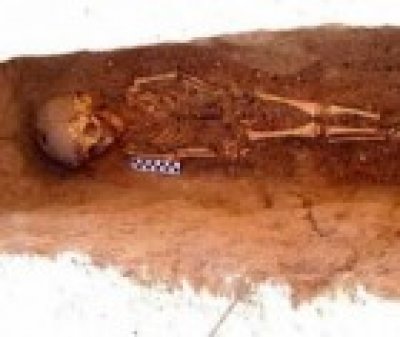The 2000-year-old skeleton of the child has told about severe methods of education of ancient Egyptians
Archaeologists discovered the remains of a toddler in Romano-Christian-period cemetery in Dakhleh Oasis, Egypt, who showed evidence of child abuse. Here, mud bricks for two tomb structures in the cemetery. In the foreground, several excavated graves can be seen.
The first record case of child abuse in history is believed to have been uncovered in Egypt. Archaeologists say the 2-3 year old child, known only as 'burial 159', shows signs of having repeatedly had her bones broken, and being shaken repeatedly.
The find is believed to be the oldest record of child abuse - and experts say it may stem from an Egyptian belief that children had to be 'toughened up' as they grow.
The researchers carried out series of tests on the child, known as Burial 519, and found chemical markers left when the body tries to repair itself and a number of bone fractures throughout the body, on including the forearm, ribs, pelvis and back.
The team say the fractures were all in different stages of healing, which they claim further signifies repeated nonaccidental breakages.
One fracture on the child's upper arms was in the same spot on each arm, and showed a break all the way through - which experts say would require a large force.
After comparing the injury with the clinical literature, the researchers believe that someone grabbed the child's arms and used them as handles to shake the child violently.
Other fractures were also likely caused by shaking, but some injuries, including those on the ribs and vertebrae, probably came from direct blows. The archaeologists aren't sure what ultimately killed the toddler.